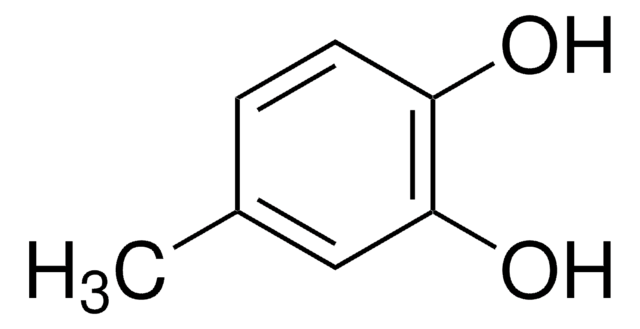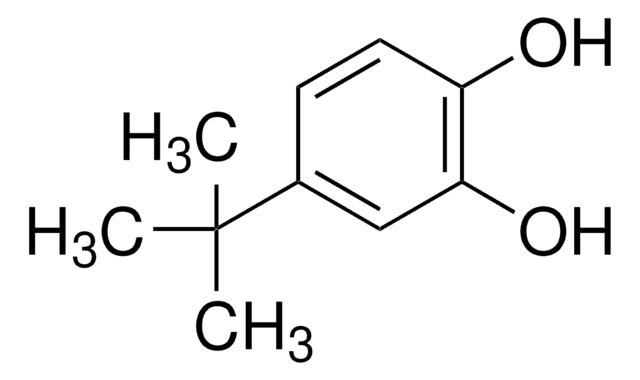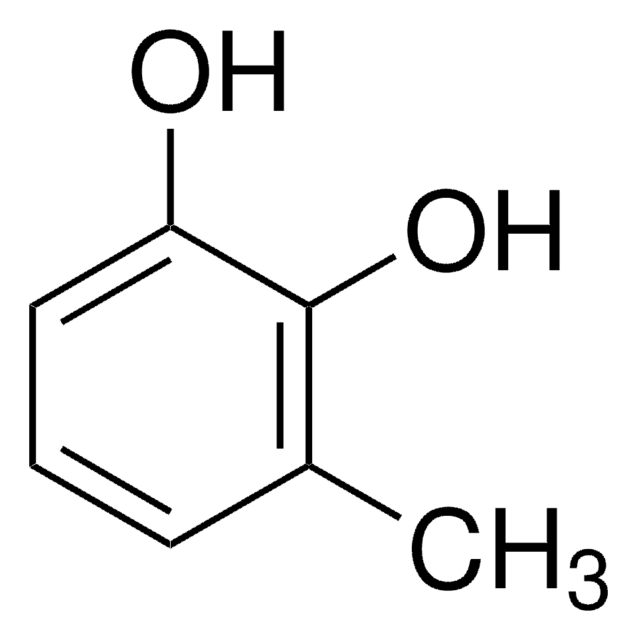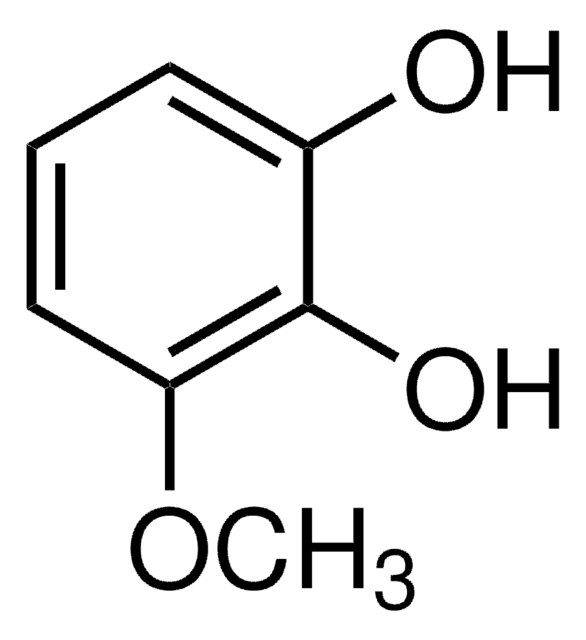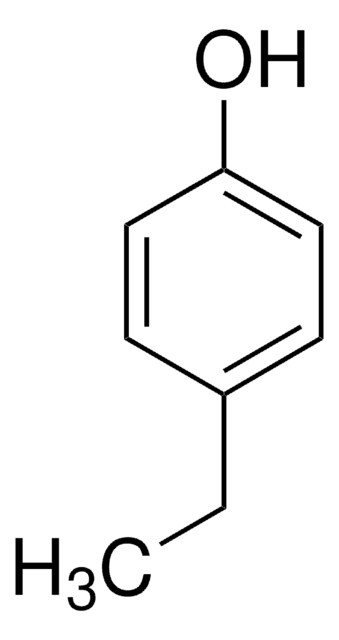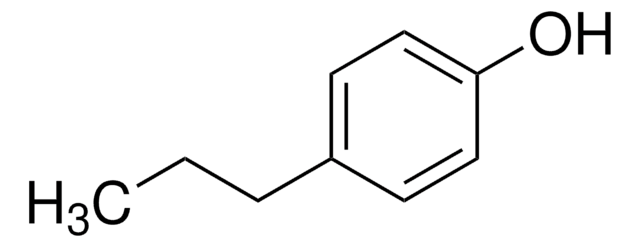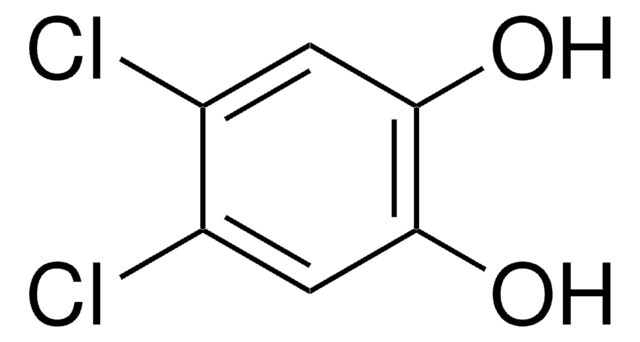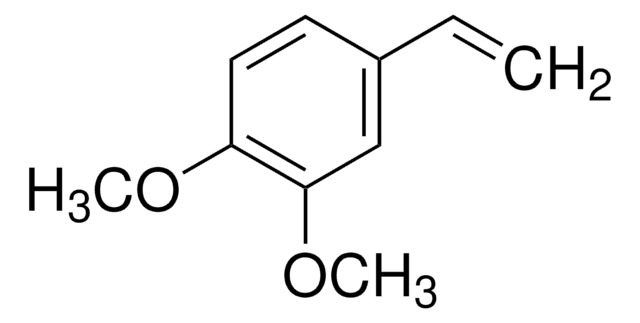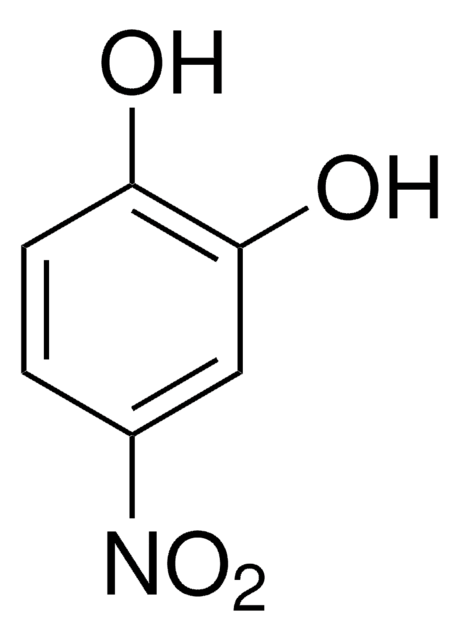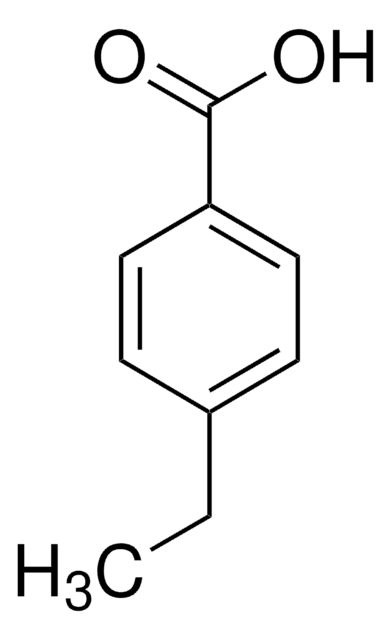683957
4-Ethylcatechol
95%
Sinonimo/i:
3,4-Dihydroxyethylbenzene
Autenticatiper visualizzare i prezzi riservati alla tua organizzazione & contrattuali
About This Item
Formula empirica (notazione di Hill):
C8H10O2
Numero CAS:
Peso molecolare:
138.16
Numero CE:
Numero MDL:
Codice UNSPSC:
12352100
ID PubChem:
NACRES:
NA.22
Prodotti consigliati
Saggio
95%
Stato
solid
Punto di fusione
34-45 °C
Stringa SMILE
CCc1ccc(O)c(O)c1
InChI
1S/C8H10O2/c1-2-6-3-4-7(9)8(10)5-6/h3-5,9-10H,2H2,1H3
HFLGBNBLMBSXEM-UHFFFAOYSA-N
Categorie correlate
Avvertenze
Danger
Indicazioni di pericolo
Consigli di prudenza
Classi di pericolo
Acute Tox. 4 Oral - Eye Dam. 1 - Skin Irrit. 2 - STOT SE 3
Organi bersaglio
Respiratory system
Codice della classe di stoccaggio
11 - Combustible Solids
Classe di pericolosità dell'acqua (WGK)
WGK 3
Punto d’infiammabilità (°F)
>230.0 °F - closed cup
Punto d’infiammabilità (°C)
> 110 °C - closed cup
Dispositivi di protezione individuale
dust mask type N95 (US), Eyeshields, Gloves
Scegli una delle versioni più recenti:
Possiedi già questo prodotto?
I documenti relativi ai prodotti acquistati recentemente sono disponibili nell’Archivio dei documenti.
I clienti hanno visto anche
Gautam Gaur et al.
Applied and environmental microbiology, 86(5) (2019-12-22)
Phenolic acids are among the most abundant phenolic compounds in edible parts of plants. Lactic acid bacteria (LAB) metabolize phenolic acids, but the enzyme responsible for reducing hydroxycinnamic acids to phenylpropionic acids (HcrB) was only recently characterized in Lactobacillus plantarum
Robert Brüninghoff et al.
Environmental science & technology, 53(15), 8725-8735 (2019-07-10)
We evaluated electrochemical degradation (ECD) and photocatalytic degradation (PCD) technologies for saline water purification, with a focus on rate comparison and formation and degradation of chlorinated aromatic intermediates using the same non-chlorinated parent compound, 4-ethylphenol (4EP). At 15 mA·cm-2, and
Raffaele Guzzon et al.
Journal of food science and technology, 54(3), 810-821 (2017-03-17)
Careful control of spoilage microflora inside wine containers is a key issue during winemaking. To date, attention has been paid to the development of an effective protocol for the eradication of spoilage agents, especially
Mario Malacarne et al.
Food chemistry, 206, 274-283 (2016-04-05)
Commercial tannins from several botanical sources and with different chemical and technological characteristics are used in the food and winemaking industries. Different ways to check their botanical authenticity have been studied in the last few years, through investigation of different
Nicholas S Kruyer et al.
Scientific reports, 10(1), 13367-13367 (2020-08-10)
Microbial production of adipic acid from lignin-derived monomers, such as catechol, is a greener alternative to the petrochemical-based process. Here, we produced adipic acid from catechol using catechol 1,2-dioxygenase (CatA) and a muconic acid reductase (MAR) in Escherichia coli. As
Il team dei nostri ricercatori vanta grande esperienza in tutte le aree della ricerca quali Life Science, scienza dei materiali, sintesi chimica, cromatografia, discipline analitiche, ecc..
Contatta l'Assistenza Tecnica.